The Sustainability of Regular Pens, Fountain Pens, and Goose Quills
So I've been wondering how one would reduce the amount of (mostly) plastic waste generated by using pens, chiefly by comparing the sustainability of three types of pens I've used this year.
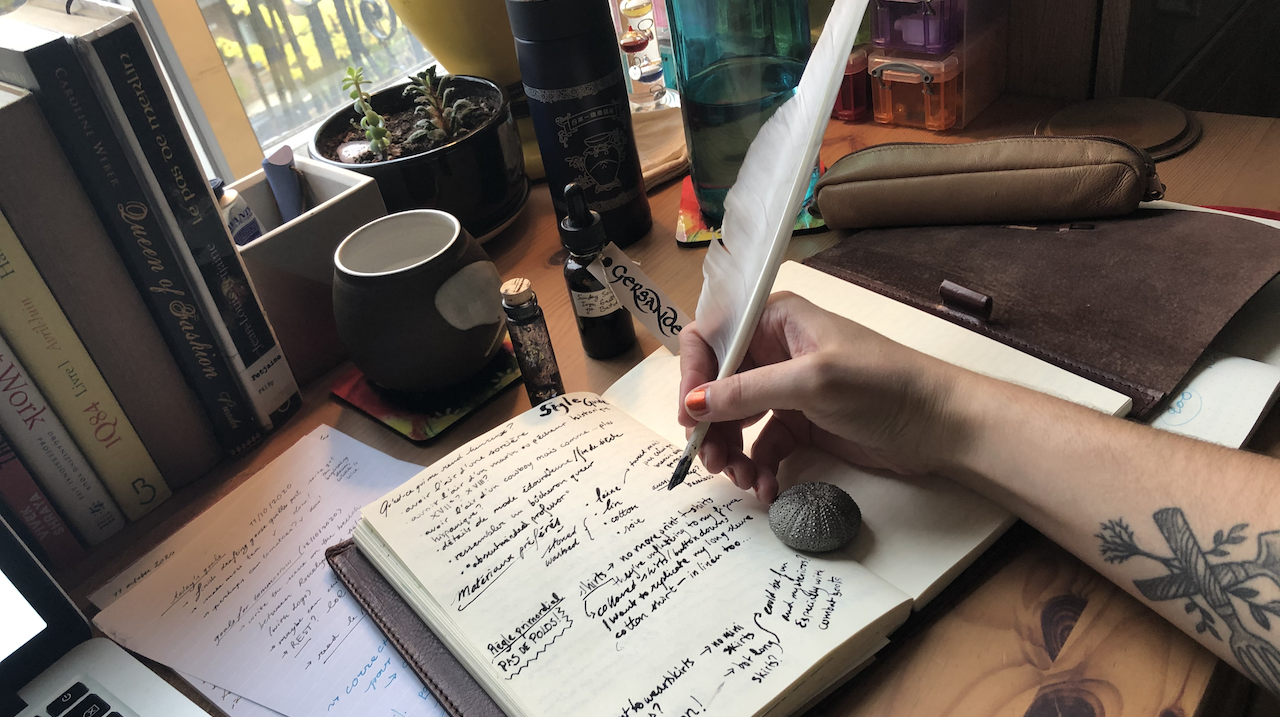
I wrote about my divestment from fast fashion in September, a post which provoked an interesting discussion on my social media and which got me thinking about other small ways I could reach for zero waste in my daily activities.
One of my chief joys in life is writing by hand. My project and work notes are contained within the pages of physical notebooks, I have a personal journal I write in nearly daily, and I love writing and sending physical letters whenever I have an excuse and the time to do so. So I've been wondering how one would reduce the amount of (mostly) plastic waste generated by using pens, chiefly by comparing the sustainability of three types of pens I've used this year.
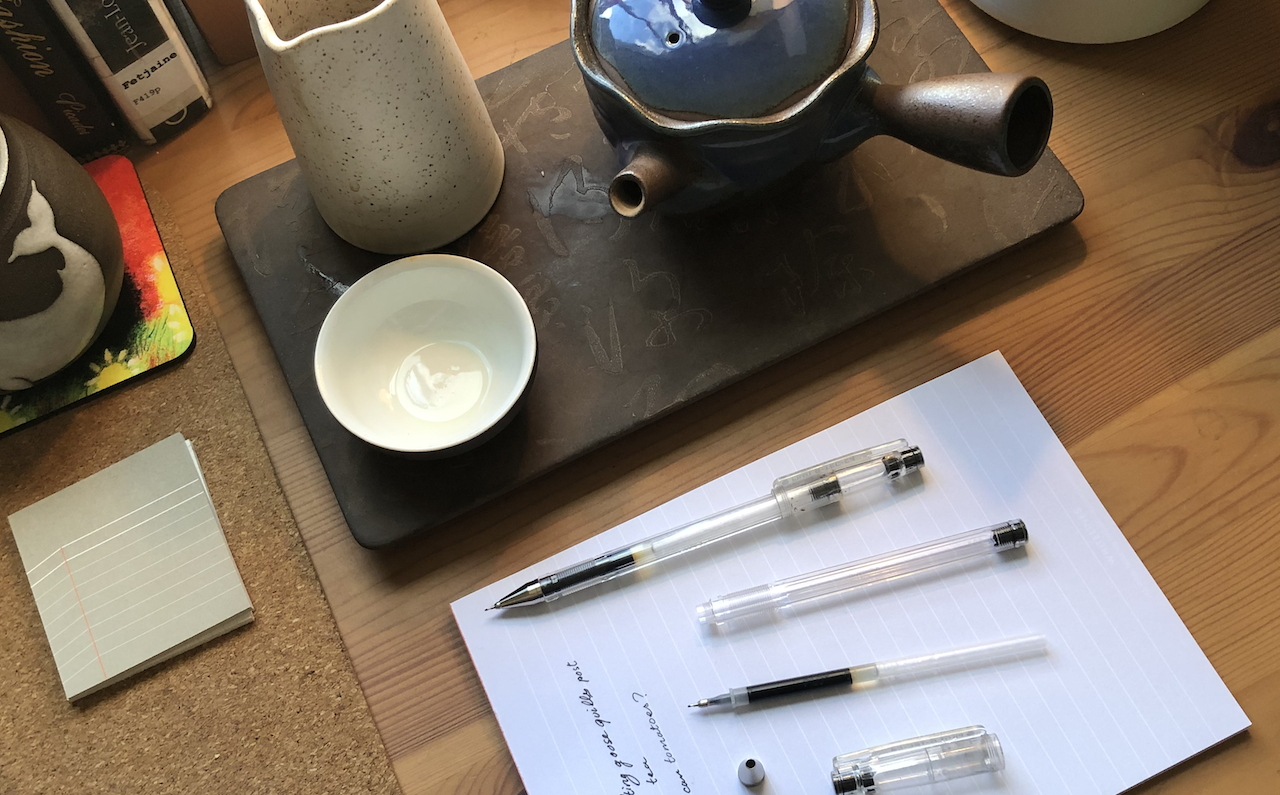
Pilot G-Tec-C4s Pens
I've been absolutely enamoured with these pens since high school (if memory served, my friend Goaty introduced me to them). Like most ballpoint or gel pens, they have four components:
- Metal cone
- Plastic body of the pen
- Plastic Cap
- Attached cartridges and nib/feed (plastic and metal glued together)
The good: I love using these pens — they write finely, for most papers the ink flow is consistent, and they are lightweight enough to use for long periods of writing, despite my tendinitis and RSI in my hands. Of all the options on this page, these pens are the cheapest option, especially if you get the refills. Each pen retails between CAD 3-5 depending on where you find it, and a box of 12 refills can be found for roughly CAD 30 — that's CAD 2,5 per refill.
The bad: These pens are essentially not recyclable, at least in most municipal recycling programs here in Québec (which are abysmal). Once a pen's ink supply is depleted, the pen's are meant to be thrown away. Or you can buy new disposable plastic refills and replace the inside, though these depleted refills still end up in the trash. There's a retailer near me who offers to collect old pen ink refills “for recycling,” but I have no idea what that means in concrete terms. It's also worth noting that these pens are manufactured in Japan or in France, so the pollution impact of extracting the oil or other hydrocarbons, shaping it into plastic, then into pens, and then to getting to them to North America is substantial.
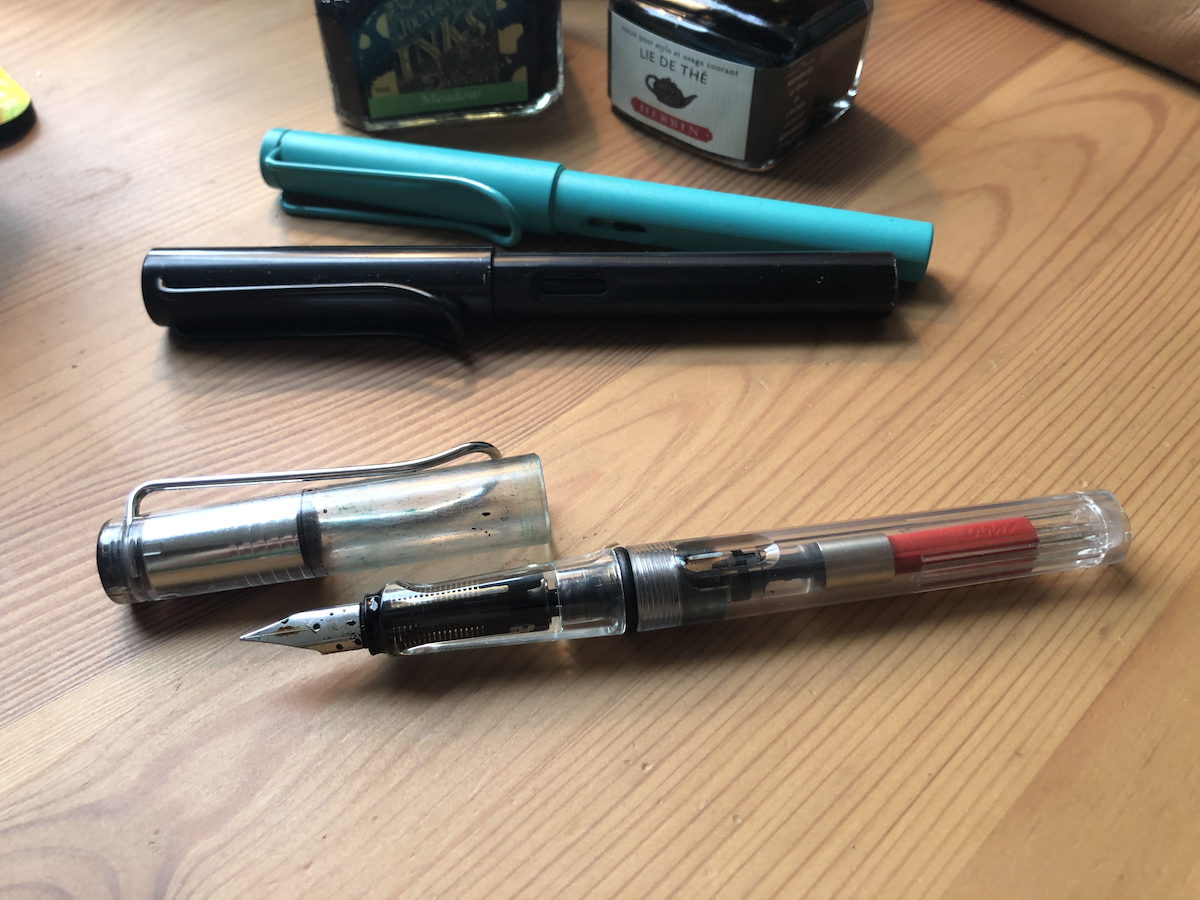
LAMY Fountain Pens
I discovered LAMY pens in university and became enraptured. They are my daily writing pens, filled with ink from Herbin or Diamine. My Lamy fountain pens can be disassembled into the following components:
- Plastic Cap
- Steel nib
- Plastic feed and section that is held by the hand
- Plastic barrel
- Plastic converter
The good: While the pens are plastic, with careful maintenance and cleaning, these pens can be a more sustainable options. Regular cleaning can ensure the plastic bits don't need to be replaced for a very long time. The steel nibs can be replaced as well in case you drop the pen in a fit of writerly passion. The converter (which holds the ink) can be refilled from glass ink bottles that are easily cleaned, reused and recycled. I've had my oldest Lamy pens for 6-7 years, and I bring them everywhere with me, so they're pretty hardy too.
The bad: Refilling the ink converter can be messy, which might mean many people would prefer using the disposable plastic ink cartridges that can be bought with the pens. Apart from the steel nibs (a metal which is not accepted by my municipal recyling pick-up despite being considered one of the most recyclable metals), these pens themselves are also mostly plastic, which is still not a sustainable material to manufacture. All plastic eventually degrades, and it is not clear to me what recycling options currently exist for a fountain pen at the end of its life cycle. Maintenance also requires a minimum of time and effort, which makes them less useful for people with very busy schedules — or for those who are not super excited by the idea of inevitable ink stains on hands and possibly even clothes. (While I personally find ink stains pretty charming, everyone has a different barometer there.)
To consider: LAMY fountain pens are inexpensive by fountain pen standards, but for people making the jump from regular pens the prices can sometimes be surprising. My pens each ranged between CAD 35 - 50 (once you factor in the price of different nibs or the converter, which are sold separately). Bottles of ink can also be found for relatively good prices if you shop around and if you pay attention to back-to-school sales at your local papeterie. A 30mL bottle of Herbin ink (CAD 15) can often last me 6 months if not more, depending on how much I'm writing with it. (If you're only using it for special occasions, expect it to last several years.)
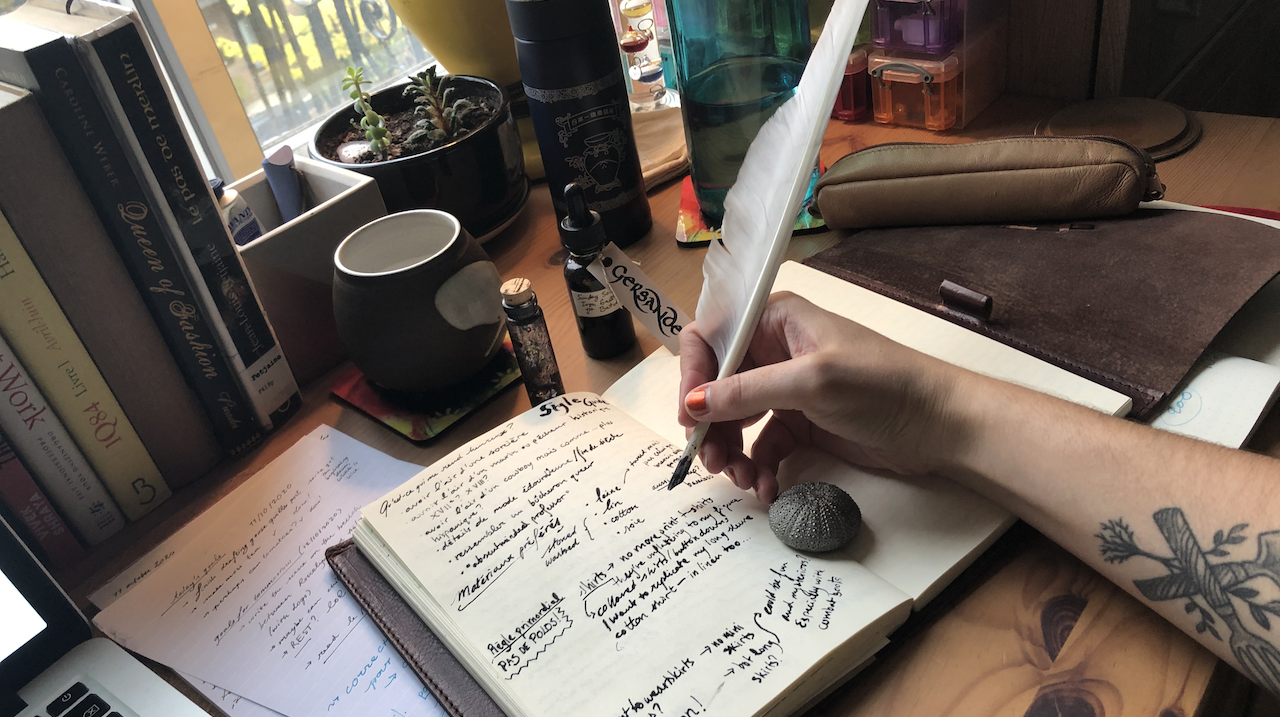
Goose Quills
In late summer, on a bit of a whim I admit, I ended up buying a handmade iron gall ink from Sunday Scriptorium. Iron gall ink is made from iron salts and tannic acid derived from vegetable sources, and the colour it makes is black or a deep purple-blue. It was the ink formulation used in Western Europe for a 1,400 year period between the 5th and 19th centuries. Unfortunately, iron gall ink is not recommended for use with a lot of modern fountain pens, as the ink can have a corrosive effect. I went on a deep dive to find someone who would sell me actual goose quills and experimented with them at length during the fall.
Here are the components that make up a goose quill:
- A goose quill
The good: My grandmother was absolutely thrilled when I sent her a recording of writing her a letter using a goose quill, because it reminded her of her childhood, as her own grandmother used to write letters with a goose quill. Honestly, once you've got the hang of it, writing with a goose quill is pretty fun and makes you feel like Captain Wentworth penning a devastatingly heart-rending love letter. Moreover, a very strong point in favour of goose quills is that they are compostable and many municipal composting programs do accept feather and fur in small quantities (from pets) and can deal with them. The feather's compostability is a very compelling factor of this writing method's overall sustainability, especially if you can source your quill from a local source that takes good care of their animals.
The bad: Casually jotting down notes for work with a goose quill might emanate Big Pen Energy, but as I often have to write very quickly when I'm working, writing swiftly with a goose quill is a messy business. The iron gall ink I have penetrates deeply on most paper, meaning I can only use one side of it, which also means I'm using more paper in the long run. Learning how to sharpen a quill with a razor-sharp knife is also tricky (though the quill shavings are compostable). If you don't have the means of composting a goose quill and can only throw it in the trash, its waste impact is probably only slightly better than plastic, as decomposable trash in a landfill breaks apart at a very slow rate compared to compost, all the while producing methane, which contributes potently to global warming.
To consider: There is the question of sourcing that cannot be cast aside. Geese have been domesticated by humans for over 4000 years, but before the 19th century, few people worldwide had a need for writing implements as they do today. How scalable would goose quills be as a widespread, global zero waste alternative when writing by hand is necessary? Not very, I'd imagine. Moreover, what is the environmental and cultural impact of domestic geese, especially on land where they are an invasive species imported by colonizers? These are all questions I'm not qualified to answer, but must also be taken into account before any claims of sustainability can truly be made.
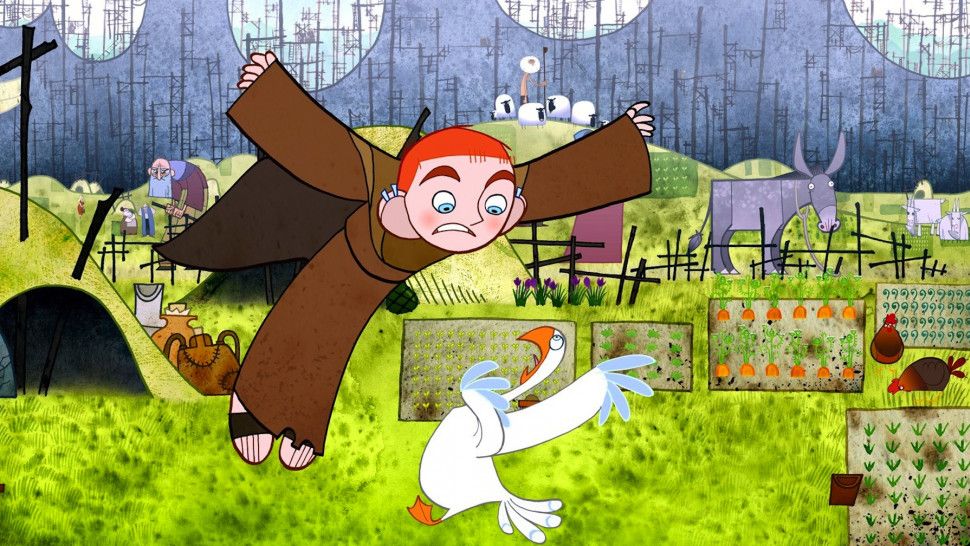
Sustainability is a complex equation with endless possible variable inputs. The more I think about the issues involved, the more I think that it's impossible to say for certain what is the best option, though figuring out what is likely a better option given your circumstances and what choices are available to you is a little easier. I think I will keep using the few goose quills I have because of how wonderfully fun they are to use (living my best #medievalscribelife over here), but when it comes to everyday writing for work, I think I'll stick to the fountain pens I already have. As is often the case, sustainability is all about using what you have.
